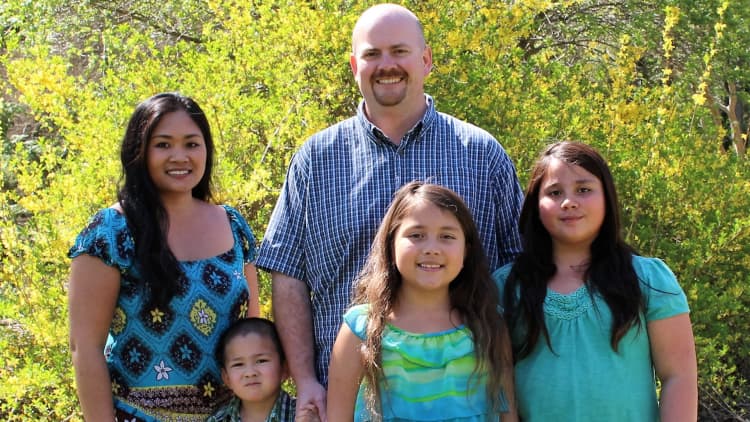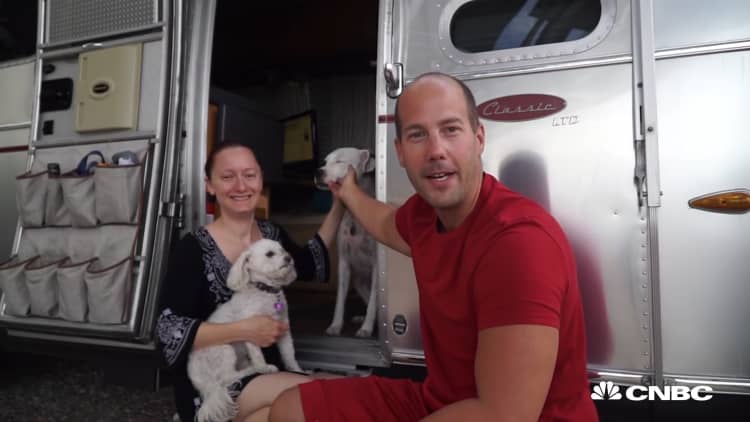Do you want to know one of the secrets to accumulating large amounts of wealth? Here's a hint: It's not about making a ton of money.
In truth, one of the keys to saving a bunch of cash is actually quite simple: Automate your finances.
One of the biggest reasons why so many people don't save enough money comes down to discipline. When we're forced to think about saving our hard-earned dollars, month after month, our chances of success diminish. Things get in the way, don't they? Life gets too hectic. It happens to all of us. It's happened to me, too. We forget. We make other choices.
The solution is automation. Take discipline out of the equation and that completely streamlines the savings process.
After we automate our savings, we don't have to think about saving money. Ever. Once it's set up, which is typically very easy to do, all you'll have to focus on is enjoying your life with the understanding that things are happening behind the scenes, things that will dramatically improve our quality of life when we get older.
Automation means money will be there when we retire.
And it's easier than it might seem. The idea is to use your company's payroll system, bank or investment company to fund your retirement and savings accounts automatically.
Follow these three steps to ensure you're set up to make saving easy:
1. If your company offers a 401(k), use it
These retirement accounts are pre-tax, which means you're using earnings before it is taxed as income. 401(k) contributions also lower your taxable income, which means you will owe less money to the government. It's a win-win!
The advantages don't stop there. Some companies will match a certain percentage of your contributions, commonly around 4 percent. That means if you contribute 4 percent of your income into a 401(k), the company will throw in another 4 percent on top of your salary. That's free money. Take advantage of it.
Keep in mind that 401(k)s are retirement accounts, which means you'll need to wait until you're 59 ½ before withdrawing your contributions (without incurring a 10 percent penalty). Any money that you withdraw from a 401(k) will be taxed as income at that time.

2. Open an individual retirement account (IRA)
There are two flavors of IRA accounts: Traditional and Roth. The biggest difference between a traditional and Roth IRA is when taxes are paid.
Traditional IRAs are taxable when the money is withdrawn (it's treated as regular income). However, all contributions are pre-tax, just like with a 401(k). A Roth IRA, however, front loads your tax burden (post-tax), but that money is not taxed when you take it out. Note there are some restrictions on who can invest in Roth IRAs based on income.
How much should you save? Strive for 10 percent. If you can't save 10 percent yet, start small and work your way up. Even if it's only 1 percent, that's OK. Start there. Over time, make a point to increase your savings percentage. In a few months, try 2 percent, then 3 percent.
Now, make your 401(k) and/or IRA contributions automatic by asking your employer or payroll service to automatically deduct money from your paycheck before you even see it. This way, you aren't writing checks or initiating bank transfers. It all happens behind the scenes.
This is called paying yourself first. Before you see any money, your retirement accounts are already funded. Automatically.

3. Open a savings account for emergencies
Use a savings account, rather than your existing checking account, to separate your emergency fund from your spendable cash. I have an interest-bearing Ally savings account that, currently, offers over 1 percent interest every month.
Depending on how much you have saved, this can easily add up to hundreds or thousands of dollars a year. A money market account is another excellent avenue to save money and earn interest at the same time.
How much should you save? I like to keep at least three months of living expenses in my savings account. That money can carry me through most emergency situations and even an unexpected job loss. But don't worry if you don't have that much saved yet. Even if it's $50 a month, start saving. It all adds up.
Make it automatic by setting up a recurring money transfer from your checking account to your savings account. Pick a day to make the transfer each month, then let the system work for you on its own. Most banks offer this capability online.

Remember: Money in your savings account is earmarked for a rainy day. Don't touch it unless you have a crisis that requires cash fast. The point of a savings account is to separate that cash from your spendable pot of money to reduce the chances of accidentally spending it.
Don't cheat yourself. Let the system work for you and the cash will pile up.
Ultimately, the key to saving a ton of cash is automation. Once it is set up, you won't have to think about it: Saving just happens. Use automation to pay yourself first by fully funding your retirement accounts, then use recurring bank transfers to ensure your emergency savings account has plenty of cash to withstand an emergency or sudden job loss.
Automation makes saving easy.
Steve Adcock retired from full-time work in his mid-30s and writes about personal finance and financial independence. Steve can be reached on his website at ThinkSaveRetire.com and Twitter at @ThinkSaveRetire.
Like this story? Like CNBC Make It on Facebook!
Don't miss: This couple retired in their 30s and are now traveling full time in an Airstream
Video by Luqman Adeniyi



